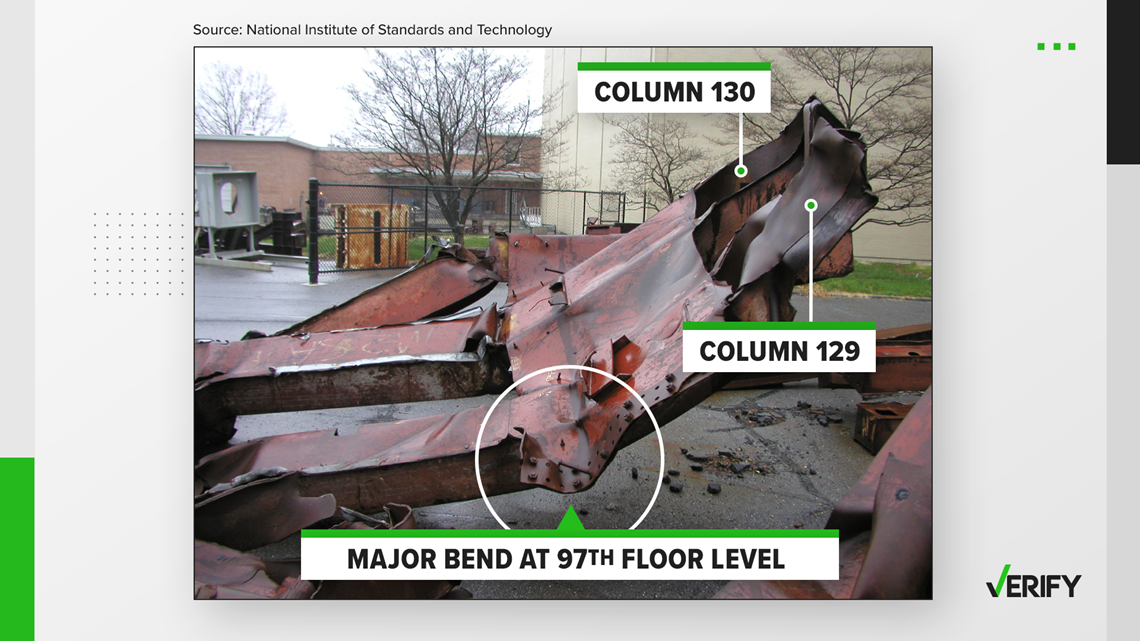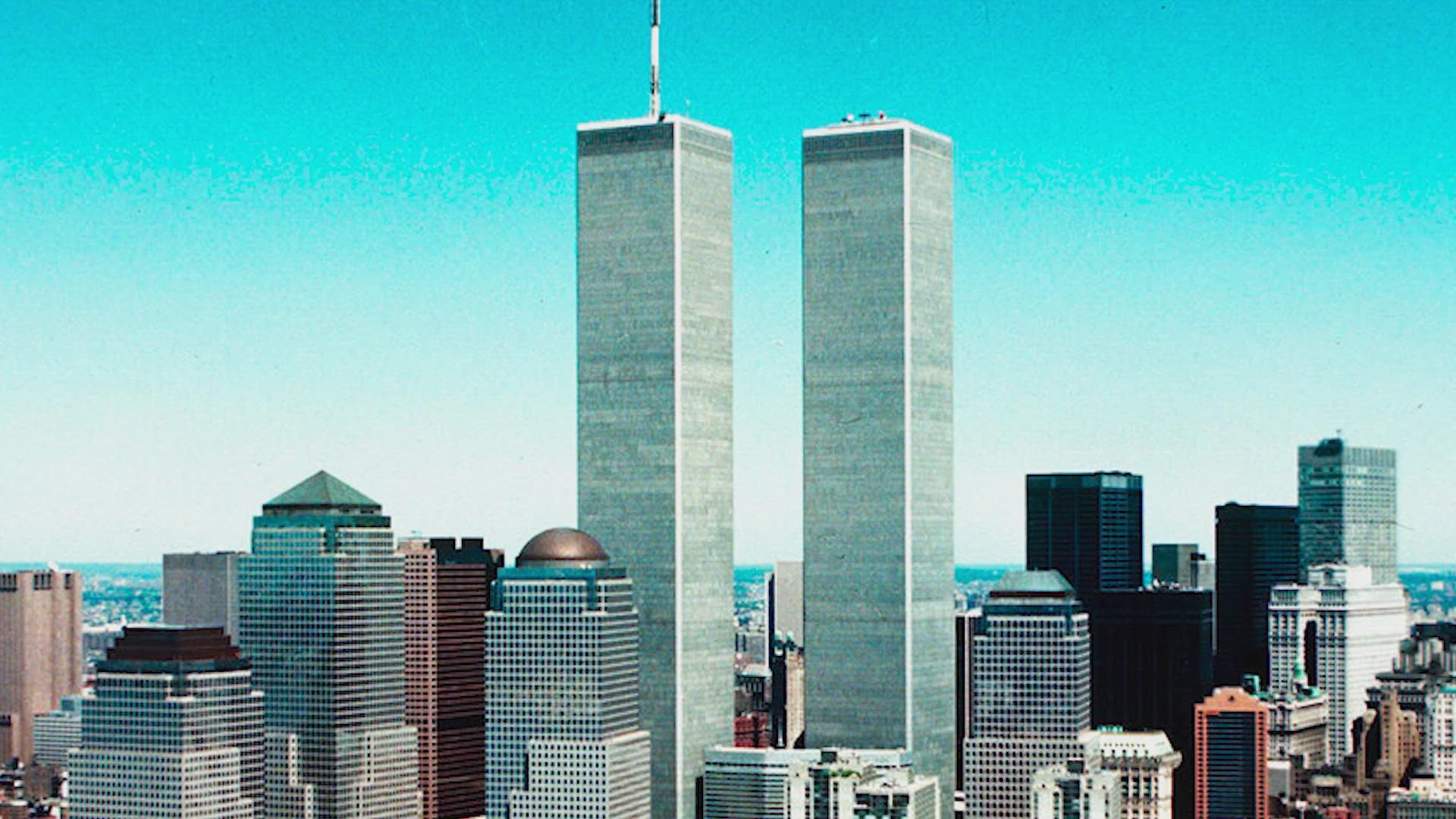Editor’s note: This story includes content and information about the events of Sept. 11, 2001, and may be distressing to some readers.
On Sept. 11, 2001, suicide bombers linked to terrorist group al-Qaida hijacked commercial passenger planes, crashing two of them into the World Trade Center’s Twin Towers in New York City.
Another plane hit the Pentagon and a fourth plane crashed in a field in Shanksville, Pennsylvania. In total, 2,977 people were killed in the 9/11 attacks.
Conspiracy theories emerged following the 9/11 attacks and they are still shared across the internet to this day.
The phrase “jet fuel can’t melt steel,” which references the Twin Towers’ collapse, has circulated online since Sept. 11 and even became part of popular meme culture.
Conspiracy theorists argue the fact that jet fuel can’t melt steel calls into question the “true” cause of the Twin Towers’ collapse.
VERIFY looked into whether jet fuel burns hot enough to melt steel.
THE QUESTION
Does jet fuel burn hot enough to melt steel?
THE SOURCES
- Thomas Jefferson National Accelerator Facility (Jefferson Lab)
- The Member Journal of The Minerals, Metals & Materials Society
- National Institute of Standards and Technology (NIST)
- Thomas Eagar, former professor of materials engineering and engineering systems at Massachusetts Institute of Technology
THE ANSWER
Jet fuel cannot melt steel, but it can burn hot enough to weaken steel. On Sept. 11, the jet fuel burned hot enough to bend steel and contribute to the Twin Towers’ collapse.
WHAT WE FOUND
Though burning jet fuel cannot melt steel, it did damage the steel and contribute to the Twin Towers’ collapse on 9/11. There is no evidence to support the ongoing conspiracy theories that the attacks were an “inside job.”
“Many sites refer to the difference in the melting point of steel and the burning temperature of jet fuel as proof that the World Trade Center could not have fallen from the aircraft fires. What those authors fail to note is that while steel melts at around 1,370°C (2500°F) it begins to lose its strength at a much lower temperature,” Brian Kross, the chief detector engineer with the Thomas Jefferson National Accelerator Facility (Jefferson Lab), wrote.
According to Kross, “the steel structure of the World Trade Center would not have to melt in order for the buildings to lose their structural integrity. Steel can be soft at 538°C (1,000°F) well below the burning temperature of jet fuel.”
Thomas Eagar, a former professor with the Massachusetts Institute of Technology, told VERIFY that steel loses half its strength when it reaches between 1,100 and 1,200 degrees Fahrenheit.
The National Institute of Standards and Technology (NIST) analyzed hundreds of steel components from the towers as part of a report published in 2015. Congress asked NIST to conduct a technical investigation into the buildings’ collapse.
According to the report, the fires ignited by jet fuel “created the sustained and elevated temperatures that heated the remaining building structure to the point of collapse initiation.”
“Based on its comprehensive investigation, NIST concluded that the World Trade Center towers collapsed because: (1) the impact of the planes severed and damaged support columns, dislodged fireproofing insulation coating the steel floor trusses and steel columns, and widely dispersed jet fuel over multiple floors,” an explainer from NIST outlined.
“And (2) the subsequent unusually large number of jet-fuel ignited multi-floor fires (which reached temperatures as high as 1,000 degrees Celsius, or 1,800 degrees Fahrenheit) significantly weakened the floors and columns with dislodged fireproofing to the point where floors sagged and pulled inward on the perimeter columns. This led to the inward bowing of the perimeter columns and failure of the south face of WTC 1 and the east face of WTC 2, initiating the collapse of each of the towers. Both photographic and video evidence—as well as accounts from the New York City Police Department aviation unit during a half-hour period prior to collapse — support this sequence for each tower,” the NIST explainer said.


“It's just not as strong when it is hot, we know that from a blacksmith taking his hammer to forge something. When it's red hot, he can beat it with a hammer, and it will deform and bend,” Eagar told VERIFY.
Trenton Tye, a Georgia-based blacksmith who has been featured on the History channel, posted a video to YouTube in 2015 that racked up more than 12 million views, to debunk what he called the “moronic jet fuel argument.”
“I am not arguing the facts, jet fuel does in fact burn at 1,500 degrees, steel will start melting, some carbon steels, at 2,300 degrees but if you hold this up as a reason for conspiracy, you are an idiot,” Tye says in the video, holding a ½-inch thick piece of structural steel.
Tye puts the steel in a 250-pound anvil, then shows how the steel supports the anvil. He then shows what an identical piece of steel looks like when he pulls it out of a furnace he says is burning at 1,800 degrees. The steel was bent but did not melt.
“It’s a freaking noodle, your argument is invalid,” he says.

